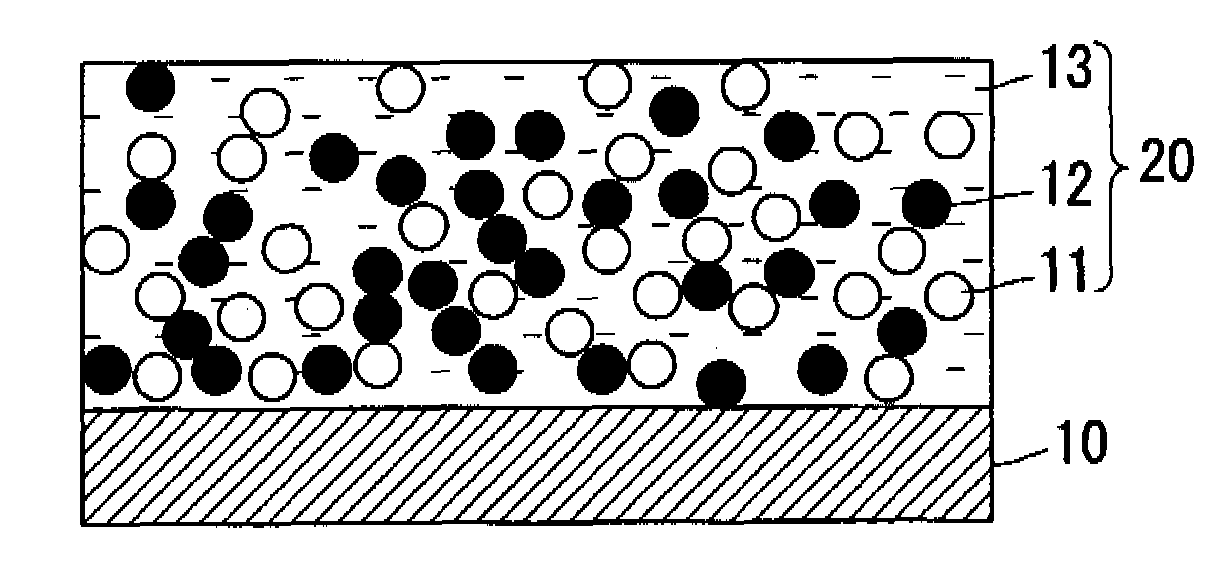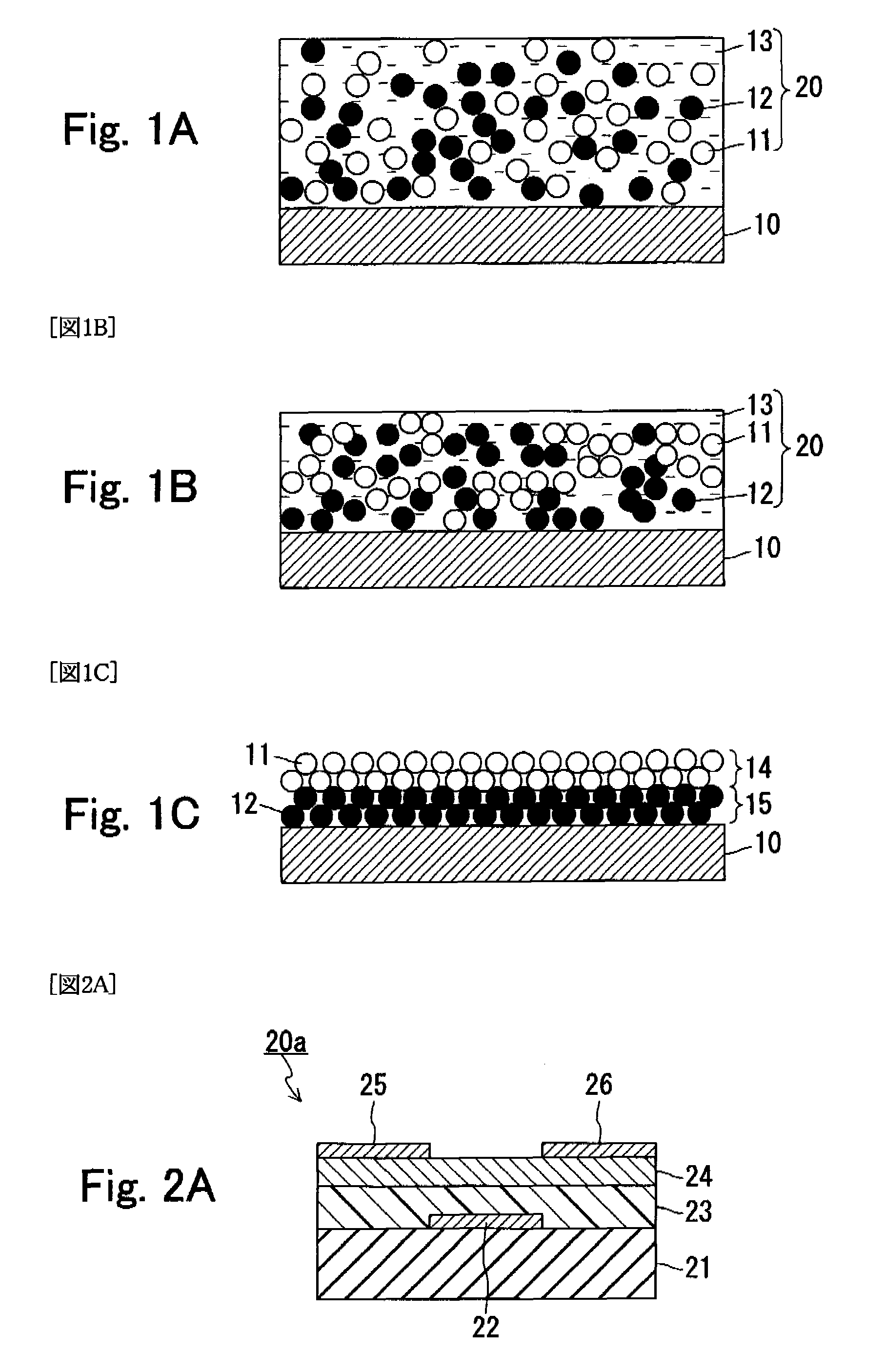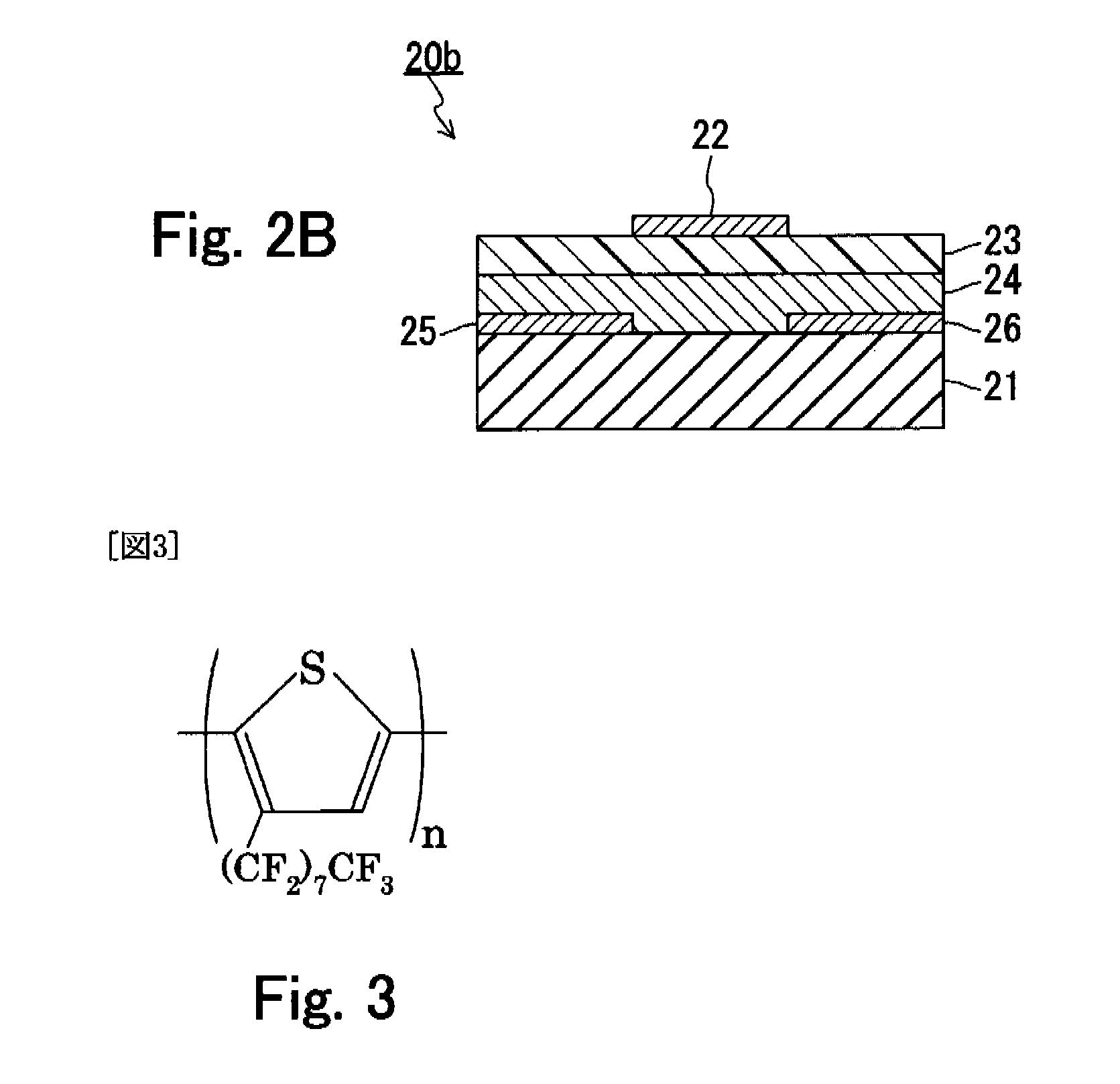Coating liquid for forming organic layered film, method of manufacturing field effect transistor, and field effect transistor
a technology of organic layered film and coating liquid, which is applied in the direction of coatings, solid-state devices, chemistry apparatuses and processes, etc., can solve the problems of contaminants adhering to the insulating layer, mutual dissolution, and not many of them have been put into practical use, so as to improve the carrier mobility of the fet
- Summary
- Abstract
- Description
- Claims
- Application Information
AI Technical Summary
Benefits of technology
Problems solved by technology
Method used
Image
Examples
example 1
[0081] In Example 1, the description is directed to an example in which a polythiophene derivative (poly(3-perfluorooctylthiophene)) is used as the first organic molecules, while polystyrene is used as the second organic molecules.
(1) Method of Synthesizing Poly(3-Perfluorooctylthiophene)
[0082] The poly(3-perfluorooctylthiophene) shown in FIG. 3 was produced as follows. That is, 3-perfluorooctylthiophene was synthesized, and this was used as a starting material with which 2,5-dibromo-3-perfluorooctylthiophene was synthesized and then was polymerized. The methods of synthesizing 3-perfluorooctylthiophene, 2,5-dibromo-3-perfluorooctylthiophene, and poly(3-perfluorooctylthiophene) are described below sequentially.
(1-a) Method of Synthesizing 3-Perfluorooctylthiophene
[0083] In a mixed solution of copper powder 10 g, 3-iodothiophene 10.5 g, 3-perfluoro-n-octyliodide 32.8 g, and N,N-dimethylformamide 60 ml, a reaction was allowed to proceed in a dry nitrogen atmosphere at 120° C. fo...
example 2
[0106] In Example 2, the description is directed to an example in which a pentacene derivative (sulfinylperfluorooctaneamide-added pentacene) was used as the first organic molecules, while polystyrene was used as the second organic molecules. The sulfinylperfluorooctaneamide-added pentacene is a precursor of a semiconductor material.
(1) Method of Synthesizing Sulfinylperfluorooctaneamide-Added Pentacene
[0107] The sulfinylperfluorooctaneamide-added pentacene was synthesized by allowing pentacene and sulfinylperfluorooctaneamide to react each other. Sulfinylperfluorooctaneamide was synthesized from perfluorooctaneamide. The methods of synthesizing sulfinylperfluorooctaneamide and sulfinylperfluorooctaneamide-added pentacene are described below sequentially.
(1-a) Method of Synthesizing Sulfinylperfluorooctaneamide
[0108] First, perfluorooctaneamide (CF3(CF2)7CONH2) (46 g) was dissolved in n-hexane (300 ml). Thereafter, trimethylchlorosilane (15 ml) was dropped gradually into the s...
example 3
[0120] In Example 3, the description is directed to an example in which sulfinylperfluorooctaneamide-added pentacene that was described in Example 2 was used as the first organic molecules, while polyvinyl alcohol was used as the second organic molecules.
[0121] A coating liquid (C3) of Example 3 was prepared as follows. That is, sulfinylperfluorooctaneamide-added pentacene and polyvinyl alcohol were dissolved in a solvent so that the content of the former was 3 wt %, while the content of the latter also was 3 wt %. The solvent used herein was a mixed solvent of tetrahydrofuran and 2,2,2-trifluoroalcohol (whose volume ratio was 1:1). Thus an organic FET was produced by the same method as in Example 2 except that the coating liquid (C3) was used instead of the coating liquid (C2).
[0122] In addition, an organic FET of a comparative example was produced as follows. First, a chromium thin film and a gold thin film were formed on a quartz substrate. Next, a mixed solution of water and e...
PUM
| Property | Measurement | Unit |
|---|---|---|
| temperature | aaaaa | aaaaa |
| weights | aaaaa | aaaaa |
| weights | aaaaa | aaaaa |
Abstract
Description
Claims
Application Information
 Login to View More
Login to View More - R&D
- Intellectual Property
- Life Sciences
- Materials
- Tech Scout
- Unparalleled Data Quality
- Higher Quality Content
- 60% Fewer Hallucinations
Browse by: Latest US Patents, China's latest patents, Technical Efficacy Thesaurus, Application Domain, Technology Topic, Popular Technical Reports.
© 2025 PatSnap. All rights reserved.Legal|Privacy policy|Modern Slavery Act Transparency Statement|Sitemap|About US| Contact US: help@patsnap.com



